


With the global shift toward digital healthcare, telemedicine apps are booming, and so is the competition. Whether you're a startup founder or a healthcare provider, knowing what goes into development and how much it costs is the first step to launching a successful product.
In this article, we’ll break down everything from key features and development stages to smart cost-saving tips and post-launch expenses in telemedicine app development.

The short answer is — it depends. The cost of developing a telemedicine app can vary based on its functionality, complexity, and overall scope. A simple MVP with basic video calls and appointment scheduling might start at around $50,000, while a full-scale platform with advanced features like EHR integration, real-time analytics, and multi-user roles can exceed $120,000.
Factors like platform choice (iOS, Android, or both), custom UI/UX design, and compliance requirements also impact the final cost. To help you plan realistically, we’ve broken down an estimated price tag based on Purrweb’s experience developing telemedicine apps.
According to a Grand View Research report, the telemedicine market size reached $141.19 billion at the end of 2024. And it's expected to be worth $380.33 billion by 2030 with a CAGR of 17.55%. The use of telemedicine is also growing. In the US, for example, 116 million users expressed a preference for virtual consultations in 2024.
Predictably, millennials like time-saving virtual care. According to Sagapixel, 74% of millennials in the US prefer telehealth visits to in-person doctor exams.
When it comes to estimating the budget for a telemedicine app, the answer is never the same. A mix of technical and strategic decisions you make early on shape the final cost. Here are the key factors that influence how much you’ll spend:
Choosing the right platform is one of the first cost-defining decisions. Building native apps for both iOS and Android means higher development time and budget.
Here’s a table showing how different platforming decisions will impact your price.
A minimal version with essentials like video calls, appointment booking, and chat will cost less than a complex product with custom dashboards, AI features, or doctor-patient matching algorithms. Startups often begin with an MVP, then scale based on feedback.
A basic UI might keep costs low, but a polished, intuitive user experience tailored to patients and healthcare providers alike is worth the investment. It can also be your killer feature that makes you stand out among competitors. At Purrweb, we focus on modern and user-friendly interfaces that drive retention.
Behind every smooth telemedicine app is a robust backend. If you’re building everything from scratch, the costs will climb. But smart integrations with tools like Twilio, Stripe, or Firebase can speed things up and reduce dev time significantly without compromising quality.
Handling sensitive medical data comes with serious responsibilities. Whether you’re targeting the U.S. (HIPAA), Europe (GDPR), or global markets, legal compliance will influence your architecture, storage solutions, and encryption layers. Ignoring this can be far more expensive later.
Going with freelancers or separate contractors might seem cheaper at first, but coordinating between designers, developers, and QA can be a time sink and a pretty nerve-wracking experience. An all-in-one agency like Purrweb offers a cross-functional development team, seamless communication, and faster turnaround. And you won’t have to chase five people for one deadline.
If only a successful healthcare app was just about video calls! A good telemedicine platform needs to feel seamless for both patients and doctors, from the first login to follow-up care. Let’s break down the essential features your app should include and why each one matters.
A simple and secure sign-up flow builds trust from the start. Include options like email, phone number, or social media sign-ins, and add two-factor authentication (2FA) for extra security. As a bonus, onboarding tutorials or walkthroughs help users get the grasp of the app quickly.
<div class="post_divider"></div>
While developing GSR — a platform for finding GSR specialists and booking appointments with them — we started with an MVP. Within 4 months and $40,000, we helped test the idea of creating a catalog of specialists in GSR and simplifying communication with them.
The client didn’t want a complex platform, so we implemented basic functions:
All of that — with a modern, user-friendly design and a user journey as simple as possible. And mind you, with screen adaptations for smartphones, tablets, and other devices.
For users, the journey to finding their specialist begins with a questionnaire.
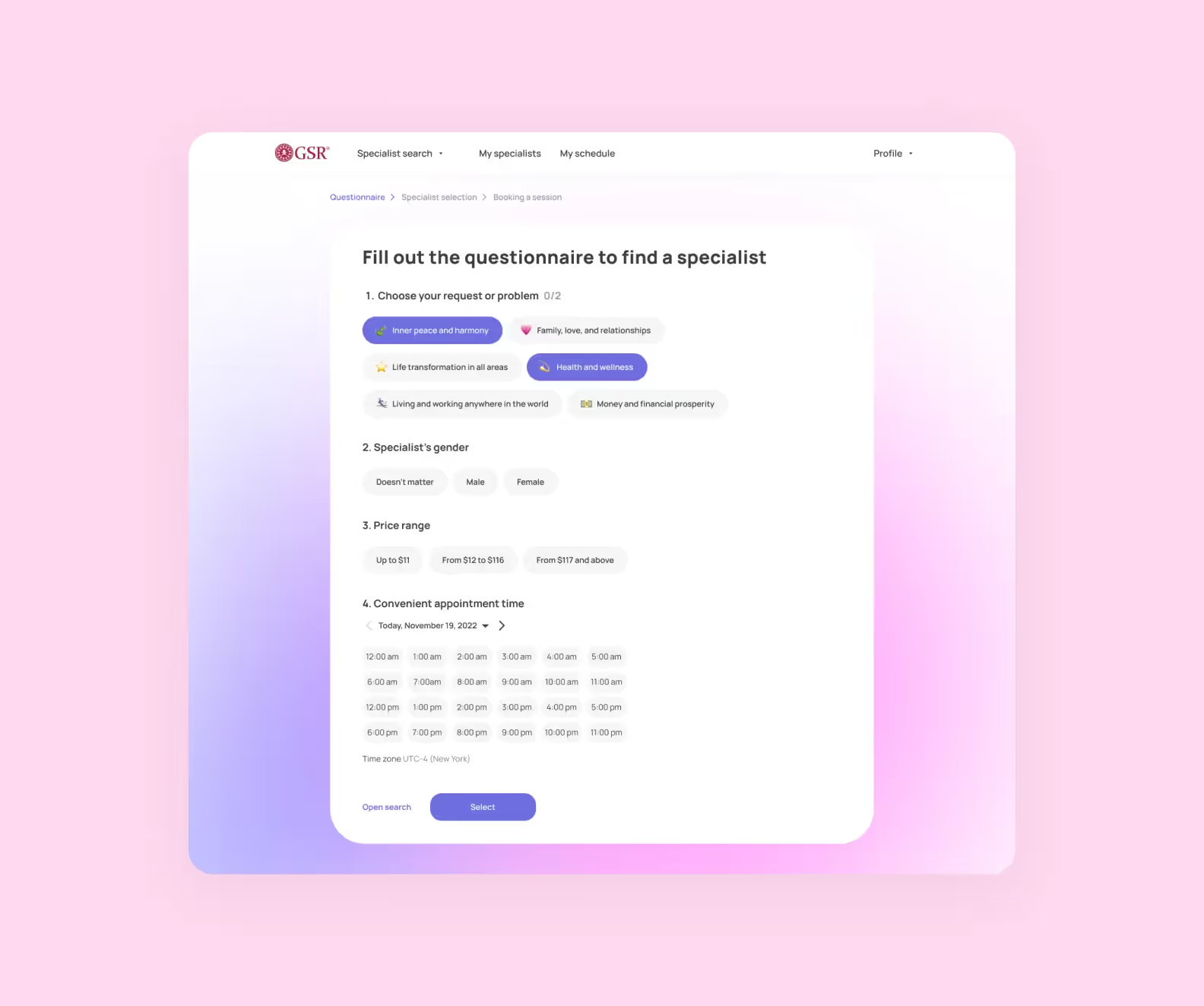
The users also can independently choose a specialist from the psychologists presented on the platform.

We also made sure that the platform would be user-friendly for specialists. Take a look at the psychologist’s dashboard, which contains the scheduled meetings, the clients’ symptoms in one place, and even metrics for specialists’ articles on the platform, if they have any. Great for remote patient monitoring!
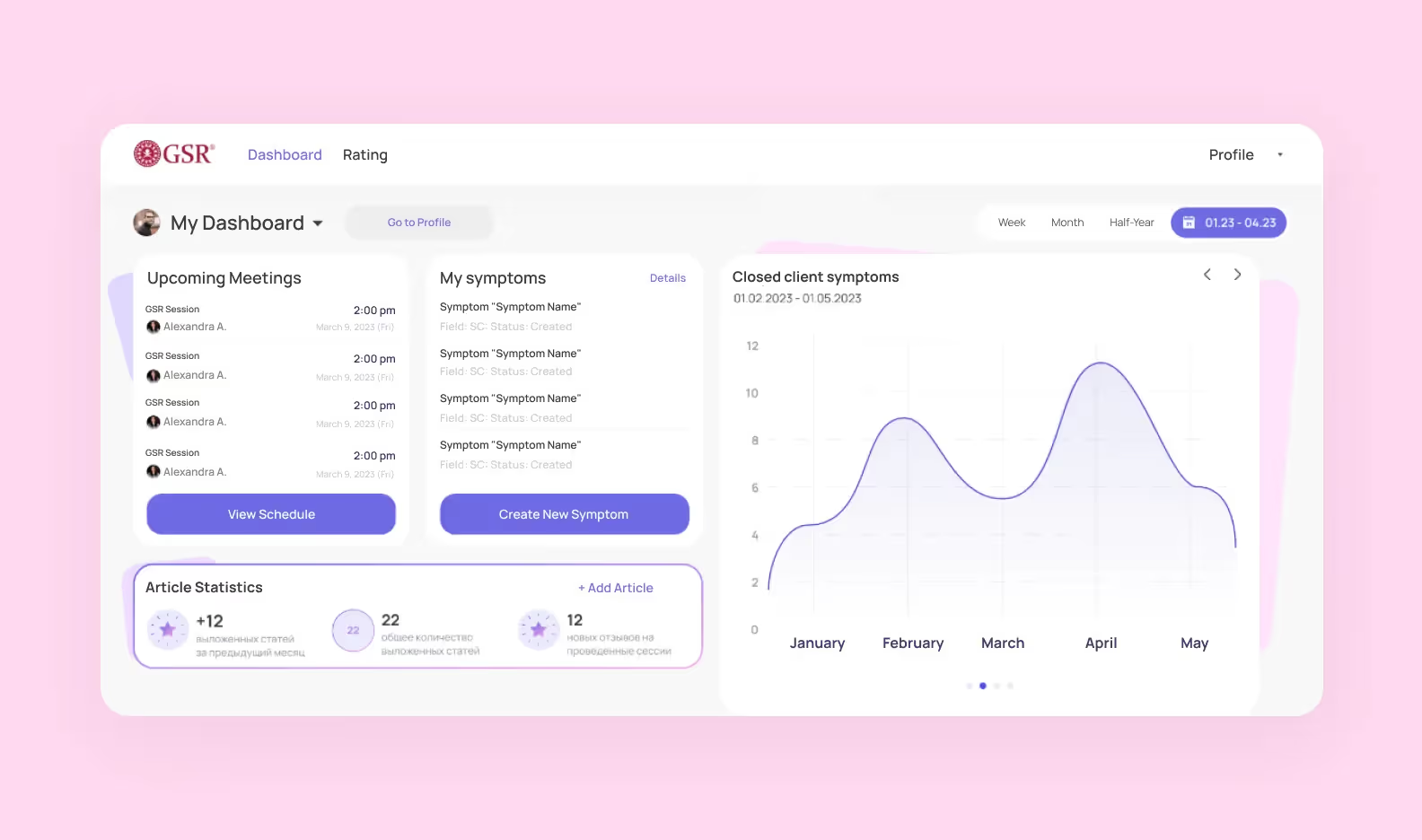
<div class="post_divider"></div>
This is the heart of any telemedicine app. Real-time video and voice calls need to be high-quality, working even on slow networks. Implementing adaptive bitrate streaming and robust WebRTC protocols is key.
Patients should be able to see doctor availability, pick a time slot, and get reminders. Features like time zone detection, automated rescheduling, and calendar sync with Google or Apple make it hassle-free for everyone.
After a session, doctors need to be able to issue prescriptions digitally. Your app can connect to EHR systems and local pharmacies, allowing users to send prescriptions directly or schedule deliveries. This adds value to the user journey and overall experience.
Let us speak for the introverts: not every interaction needs to be a call. Secure messaging lets users ask follow-up questions or share files like lab results. For therapists or psychologists, asynchronous communication is especially useful.
<div class="post_divider"></div>
Back in the tumultuous times of the 2020 COVID pandemic, we helped a UK client create an online therapy app that combined calendars, notes, chat, and video calls. Mind you, the client only wanted to design their platform with us, but in the end, they stayed for the development of a mobile app and a web service combo.
There were many similar services in the UK at the time, so we had to stand out with custom features such as calendars and video calls, adaptive design, and window management: during a session, you can minimize your video call to, say, make notes.

<div class="post_divider"></div>
Let patients pay seamlessly using trusted options like Stripe, PayPal, or even insurance co-pay portals. Consider offering payment history, invoices, and refund flows for transparency.
Profiles help personalize the experience. Doctors should be able to display their qualifications, specialties, languages, and availability. Patients can track visit history, prescriptions, and preferred healthcare providers.
For clinic staff and business owners, a solid backend matters. Build an admin dashboard to monitor appointments, view analytics, manage users, and pull reports.
<div class="post_divider"></div>
Look at Biogeek, a platform that helps users keep their laboratory tests in one place and monitor their health. It’s a web app with mobile adaptation.
In fact, it’s not even just one project — it’s two. In BioGeek.Health, users can add their test results, see the recommendations where the results are abnormal, and view the history of their lab tests. Biogeek.Expert adds new functions: a chat with a nutritionist, making a diet plan based on the electronic health records, filling out medical history, and even a patient’s diary. Meanwhile, a nutritionist can view the diary and the history and provide recommendations.
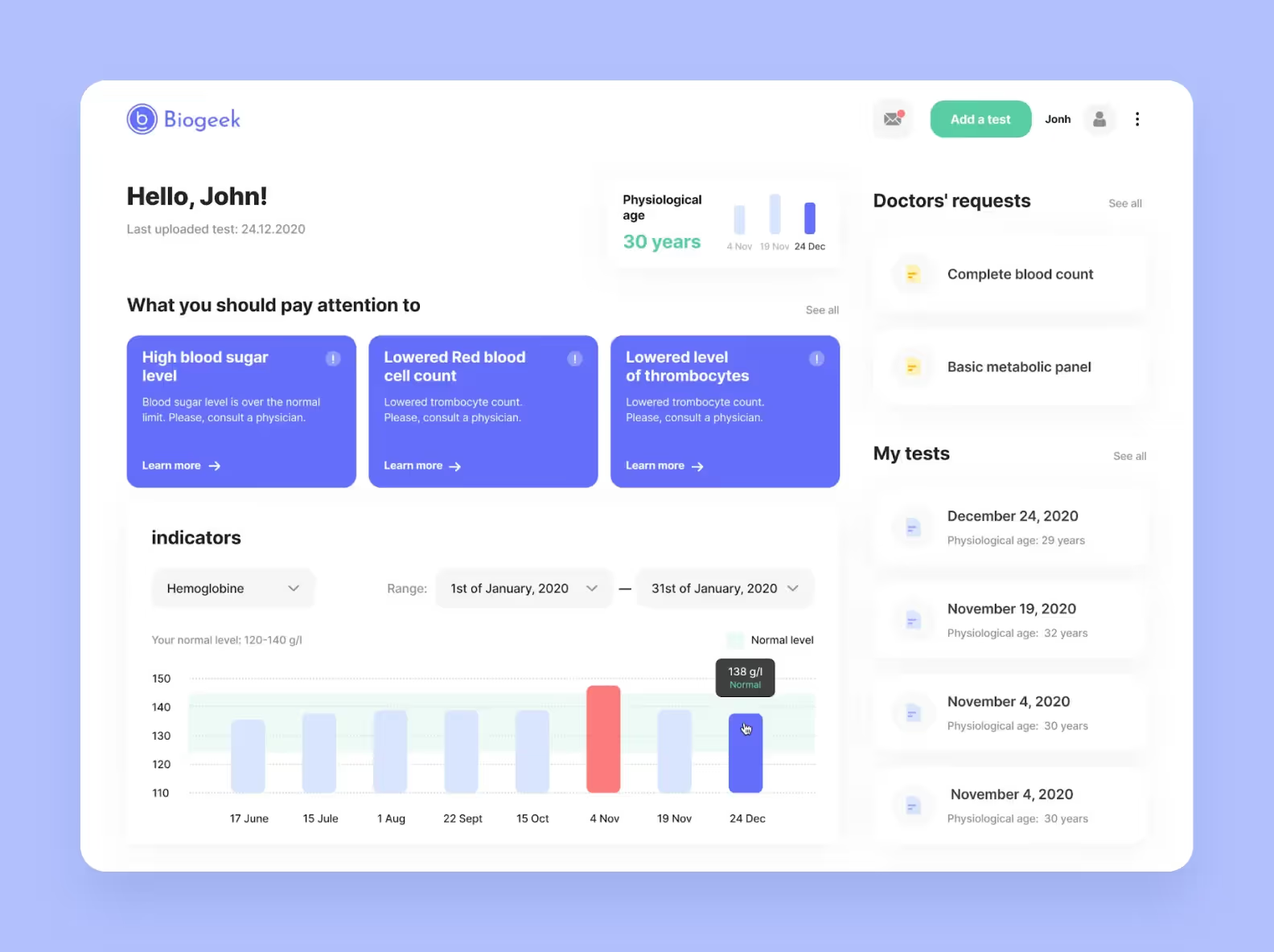
To make adding test results smooth and user-friendly, we provided users with different options: you can put your results manually, or simply import a PDF or a photo.
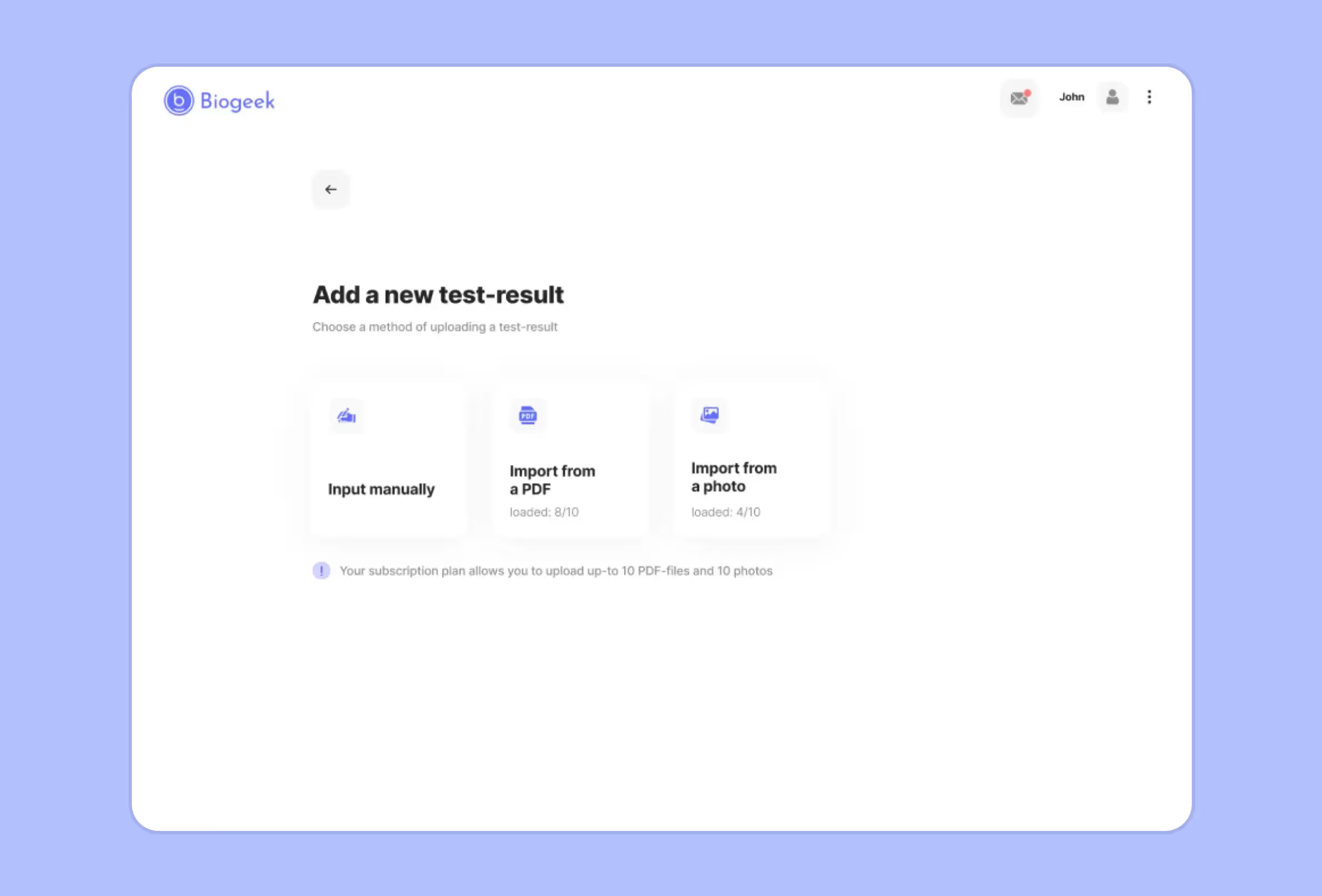
We guided this project from competitor analysis to design and maintenance. The clients were happy with the result and stayed with us for support. In the future, we aim to scale the project to international markets — particularly in Europe and the USA.
<div class="post_divider"></div>
The budget of your telemedicine app depends on many details, but we can give you an estimated price breakdown to help assess the big picture. Please note that the following prices are relevant for Purrweb, and the price tag may change if you choose another agency to work with.
Estimated cost: $3,000+
With so many competitors, it’s hard to stand out, especially at the start. That’s why the discovery phase for a telemedicine app development is what the doctor ordered 😉. Our goal here is to define your target users, understand the market, and prioritize core features. To do that, we’ll conduct market and competitor research, as well as user interviews, and determine technical requirements that’ll fit with your potential audience’s needs.
Our discovery phase usually takes up to 8 weeks and the price starts from $3,000. While it may seem like too much time and too much money, we do not recommend skipping this phase if you don’t want to find yourself spending $40,000 on a project that the market doesn’t need.
Estimated cost: $8,000+
The cost of UX/UI design depends on the number and the complexity of features you want to implement. Usually it starts at $8,000, but the number can grow — especially if you’re starting big, and not with an MVP.
<div class="post_divider"></div>
When we worked with Talk to Me — a convenient and beautiful online platform for therapists and clients — we had to use the visuals created by another agency. The brand book brought by the client already had colors, illustrations, logos, and typefaces. We didn’t need to figure things out from scratch, but there were some surprises.
For example, instead of a common laconic 2D design, Talk to Me used 3D images with floral patterns referring to tropical jungles.

We used the images from the brand book to create the authorization and landing screens, keeping the unique style of the design and the general mood.
Also, we developed design and UX solutions for three roles: for clients, therapists, and businesses, and for each role, the visual image of the platform was different.
We guided this project from competitor analysis to design and maintenance. The clients were happy with the result and stayed with us for support. In the future, we aim to scale the project to international markets — particularly in Europe and the USA.
<div class="post_divider"></div>
Estimated cost: $40,000+
Next, we build your Minimum Viable Product — the core version of your app with essential features only. This phase includes frontend and backend development, implementing core functionality like user authentication, appointment scheduling, real-time video/audio, chat and notifications, as well as API connections and database setup.
Here is a table with core features and their cost breakdown:
Estimated cost: $14,000
Before launch, every app goes through multiple rounds of quality assurance. At Purrweb, we do the testing on every stage of telemedicine app development. This includes manual and automated testing, device/browser compatibility checks, and compliance testing (HIPAA, GDPR).
Once everything’s approved, we help you submit to app stores, set up hosting, and prepare for launch day.
Launching your telemedicine app is a huge milestone, but the work doesn’t stop there. Here are the key areas to budget for after launch:
Cloud services like AWS, Google Cloud, or DigitalOcean will host your backend, databases, media content, and user data. If you’re offering video consultations or storing sensitive electronic health records, you’ll also need to factor in extra layers of encryption, backups, and performance monitoring.
But it’s not always about that: sometimes, the problems may arise even when you simply want to publish your app.
<div class="post_divider"></div>
When we developed Breathmethod — a meditation app that provided mental health support — we had to solve several third-party-related problems.
First one was with Instagram restrictions. For the launch, we needed to create a landing page, and we decided to use Gatsby, which helps load websites 2–3 times faster compared to, say, WordPress. We wanted to upload posts from Breathmethod’s Instagram account automatically to the landing page with the help of ‘gatsby-source-instagram’ plugin. But it only returned a list of posts, which wasn’t enough.
What we did instead:
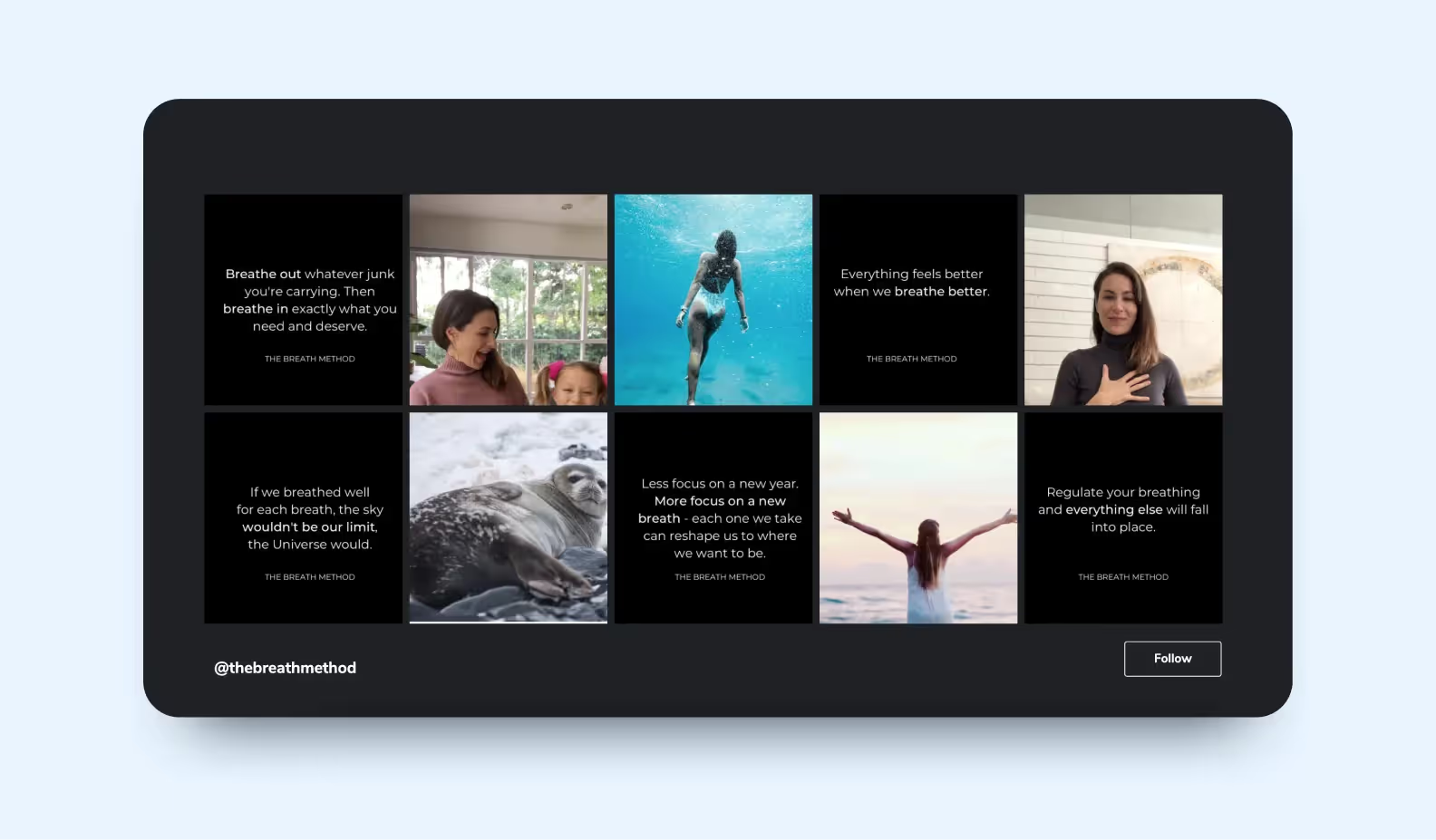
Another issue occurred when we launched and posted on App Store. For several weeks, the platform claimed that our app had no subscriptions, which often happens to apps with payments inside. To fix that, we talked to App Store support multiple times and provided many screenshots proving that the app met the requirements of the platform.
Now, the plan for the future is to further develop Breathmethod for AppleTV, since the technology stack allows doing so.
<div class="post_divider"></div>
No matter how perfect your v1 is, real users will find bugs, request features, or run into compatibility issues after updates. Ongoing maintenance includes bug fixes, performance tuning, and small UX/UI tweaks when needed.
Even the best app won’t succeed if nobody knows it exists. Expect to invest in paid ads (Google, Facebook, LinkedIn), App Store Optimization (ASO), content marketing or SEO, and influencer outreach or partnerships with clinics.
Healthcare regulations evolve, and your app will need to keep up. As privacy laws shift (think HIPAA revisions or GDPR updates), you may need to update your data storage policies, encryption standards, or consent flows.
You don’t need a massive budget to build a powerful telemedicine app. With the right strategy and tools, you can bring your idea to life faster and for less. Here are some of our insights:
Don’t try to build the ultimate all-in-one healthcare app from day one. Instead, focus on solving one core user problem well, whether it’s online consultations, prescription refills, or mental health support.
There’s no need to reinvent the wheel. Many complex features can be added quickly using existing tools like Twilio for video calls, Firebase for real-time chat, or Stripe for payments. They also usually come with built-in security, which for healthcare apps is a huge win.
We already said that managing multiple freelancers can get messy and expensive. With a full-cycle agency like Purrweb, you’re not only getting everything done under one roof, but sometimes even end up getting more than you expected.
<div class="post_divider"></div>
Remember us saying you don’t need a huge budget? Founders of the Clearstep company reached out to us when all they had was $1,500 and a future “Uber in healthcare.” Despite the unusually small budget, we decided to work with them, and neither party regretted that decision.
The idea was the following: people with health concerns would write their symptoms down in a chatbot, it would ask them clarifying questions, and provide hints on the causes and analysis recommendations. The main goal was to attract funds, so our solution was not even an MVP, but a clickable prototype. It would help investors understand the main idea and design and wouldn’t require as much money as an actual MVP.
We came up with a design concept in just 2 days. We made buttons and forms round-cornered, and used clear single-color icons with a very calm, classic font. Keeping the focus mainly on the product idea and core mechanics, we decided to leave a lot of “breathing” space.
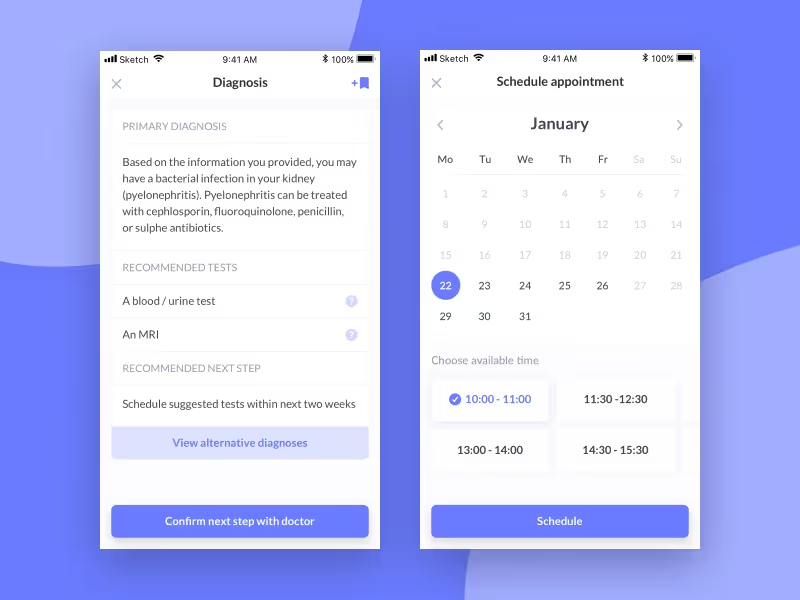
We turned our concept into a clickable prototype using Marvel — perfect for sharing and showing at conferences. We also shared the design case on Behance, receiving a lot of positive feedback. Bilal and Adeel then decided to build authority in the US healthcare market, and raised $400k for their project. To think that it all started with our clickable prototype for $1,500!
<div class="post_divider"></div>
Why build two apps when you can build one? Frameworks like React Native and Flutter let you create apps for iOS and Android with a single codebase, cutting dev costs by up to 30%. You’ll still get a native-like user experience, but without doubling the budget or time.
All things considered, you should expect a total cost of $60,000-100,000 or more for your telemedicine app. Here is a Purrweb price breakdown for different levels of complexity.
However, there are several issues you can face in a telemedicine app development.
While being a non-government mobile application, a telehealth app is still a part of healthcare and is subject to regulatory compliance, such as insurance accountability, prescribing, and healthcare regulations for a particular country.
For example, in the telehealth app development of an online psychiatry, you need to comply with prescription regulations. Psychiatric drugs are usually regulated by the government and must be prescribed by a doctor with a special license.
Solution. Before starting software development, learn about the regulations and requirements for healthcare services in the target countries. Get help from legal experts to make sure your telemedicine software follows the rules about insurance, prescriptions, and online medical services. Make sure only authorized doctors can give prescriptions through your app to follow the rules.
The second issue is the security of an app. Since a telemedicine app contains a lot of sensitive data about a person’s health, it must comply with the highest standards of data security in order to get users’ trust. When you develop a telemedicine app, you can rely on international regulatory norms like HIPAA (Health Insurance Portability and Accountability Act) and GDPR (General Data Protection Regulation) as it's the IT industry’s highest standards for data security.
Solution. Encrypt sensitive user data, both when it’s sent and stored. Be sure to update and fix bugs in your telemedicine software regularly. Check the app’s security by thorough testing to find weak spots and fix them. Tell users how you’re keeping their health data safe so they know they can see you protect their health information.
In some cases, for example in skincare, a doctor must conduct a visual examination of a patient. That is where technologies sometimes fail: if an internet connection isn’t stable or video quality is lower than HD, a doctor can have poor vision which affects the quality of healthcare.
Solution. Offer guidelines for users to ensure stable internet connections during medical consultations. Provide troubleshooting tips for common connectivity issues. Implement a feature that checks the user’s connection quality before starting a video consultation and offers recommendations for improving it.
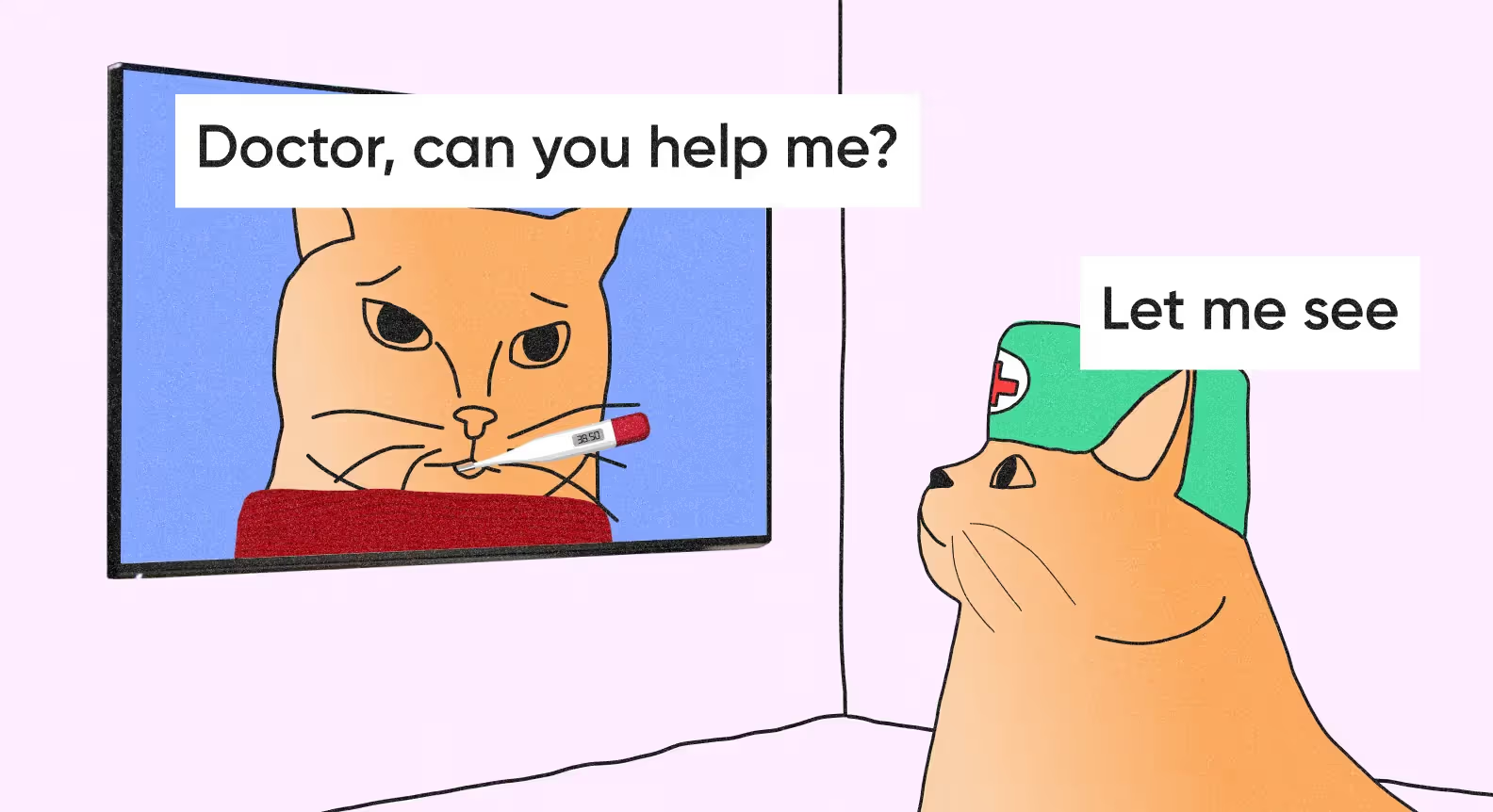
The last is the limitations for examinations. Using online healthcare services, a doctor cannot conduct a manual examination and have to ask a patient to do some parts of the examination for themselves. That is also a risk of quality decrease because a patient can translate the results incorrectly.
Solution: Clearly communicate the limitations of online consultations to users. Think about offering both online and in-person visits for cases when they need a hands-on test from a doctor. This way, they can get the right care.
Developing a telemedicine app is no small feat, but it’s far from impossible, even for startups with tight budgets. Whether you’re aiming to dip toes in traditional care or launch a niche health solution, an MVP-first approach, pre-built tools, and a reliable agency partner can keep things efficient and affordable.
➡️ If you need a development team with experience — Purrweb is here to help you design, develop, and launch your telemedicine app. <a class="blog-modal_opener">Fill out the form</a> and get a free project estimation in 48 hours.